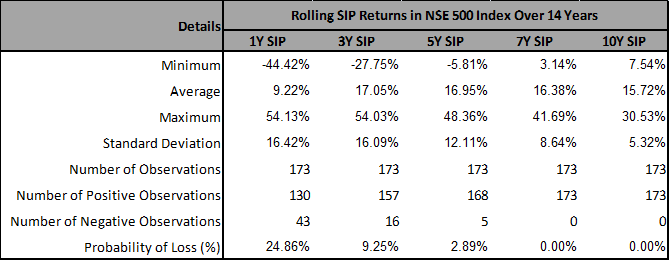After the launch of ITI Multi Cap fund in the most popular fund categories, ITI Mutual Fund has launched another must have scheme for any equity investor i.e. ITI Long Term Equity Fund, an ELSS that can offer investors with dual benefits of tax savings (up to Rs. 46,800 under section 80C) and wealth creation through equity investments. It is interesting to note that ELSS funds have a lock-in period of just 3 years which is the lowest among 80C investment options available for tax savings. No wonder ELSS funds are popular among investors and it augurs well for long term investments.
ITI Long Term Equity Fund will follow the fund house core investment philosophy ‘SQL’ (S: Margin of Safety, Q: Quality of the business and L: Low Leverage).
Margin of safety is the fair value of business minus the current share price. According to the fund house, buying stocks with good upside and less of downside is critical for a good investment experience. Quality companies with strong competitive advantages have been long-term wealth creators and therefore focusing on good quality companies is a must to protect the downside and also to create a good compounding experience.
The fund house analyses the industry structure, promoters credibility, business fundamentals, management track record, growth ambitions and balance sheet strength to evaluate the company’s health. Lastly, the fund house analyses the company’s leverage situation and prefers low leverage companies for investments. High financial leverage significantly reduces a business’s ability to withstand cyclical downturn. Low leverage companies are generally cash rich and are able to channelise their cashflows to grow the business successfully.
The fund house strongly believes that “If a fund manager avoids the losers, the winners will take care of themselves”. If you analyse the Sensex history of last 40 years, it suggests that 75% periods of time markets have been going up or flat, 25% periods of time markets have been going down. Overall Sensex has delivered approx. 15% CAGR in returns over 40 years. If the fund manager would have been able to protect the downside then the 15% CAGR jumps to 31%CAGR. So one of the biggest lesson for fund managers here is that, protecting the downside is very important to generate superior returns on a consistent basis. That is the reason Warren Buffett says that, the two most important rules of investing are 1) Don't lose money 2) Don't forget the rule No.1.
True to its mandate, the scheme will be investing across market capitalisations. As a discipline the fund will have at least 90% exposure to equities at any point of time and generally prefers not to take cash calls. Typical portfolio will include 40-70 stocks. The portfolio will be having a bunch of companies that meet the 'SQL' investment philosophy. More than 80% of the fund will always be in core set of companies and upto 20% of the fund is expected to be in tactical stocks. Core set of companies are strong and sustainable businesses with competitive advantages in their respective fields, while the tactical allocation will be towards good companies with significant upside potential but going through temporary problems and at the same time trading at beaten down prices. The fund will also try to take advantage of the three year lock-in-period, by having a longer tail of mid/small cap companies which can potentially give higher returns over longer term.
The investment strategy will be sector and market cap agnostic. Moreover, the fund house will focus mainly on bottom up stock picking with GARP strategy (growth at reasonable price) to generate long-term wealth for investors.
The fund house also sought to bust some popular ELSS myths during the NFO period. A common misconception is that like PPF, there is a Rs.1.5 lakh investment limit in ELSS. In reality, the investor can invest any amount in the ELSS scheme but the tax exemption is only up to Rs.1.5 lakhs.
The popularity of ELSS as an 80C investment option with the lowest lock-in period has also led some people to believe that investments in ELSS can only be held for three years. However, as we all know, you can remain invested in ELSS for even longer periods of time and there are no time limits as such. In fact, just like any other equity scheme, longer the investment horizon, lower the risk it is.
Back testing of 14 years of historical data on NSE 500 Index shows that the probability of loss decreases as the holding period increases. In fact, the historical data shows that, for the period under review, the instances of negative returns dropped off to zero when the investment period was 7 years. This is because equity markets tend to fluctuate in the short term. However, over a long-term equity markets have a tendency to move up in line with corporate earnings growth and GDP trends. This clearly suggests that one has to stay invested longer to have a good investment experience in equities.
Rolling SIP Returns in NSE 500 Index Over 14 Years

Based on Monthly Rolling SIP on 1st working day of the month. SIP Valuation on the 1st working day of the Next Month. Data Source - ICRA Explorer. Calculations Internal. Data Period: Dec 2004 to May 2019. Returns above 1Y are CAGR. Probability of loss is calculated by dividing total number of observations with the negative return observations.
Past Performance may or may not be sustainable in future.
Invest in Equity Linked Savings Schemes (ELSS) to save taxes and also to create long term wealth for you and for your family. India is the fastest growing country in the world and has a lot to offer in terms of GDP growth for few decades to come. So believe in the growth story and invest patiently to enjoy the long term wealth creation journey.





